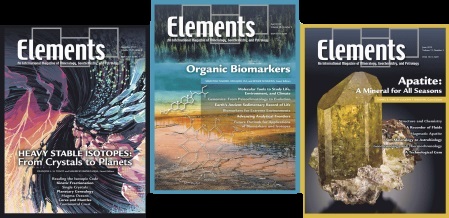After years of relative obscurity, greenalite is stepping into the limelight. Although first identified in late Paleoproterozoic iron formations over 120 years ago, its true extent has until recently remained hidden due to its minute crystal size and inconspicuous optical properties. In the last decade, nanoparticulate greenalite has become a prime candidate in the deposition of iron formations. Together with experiments and modeling, greenalite is shedding new light on the composition of the early oceans, the role of biology in iron deposition, and H2
production during serpentinization. While the origin of greenalite is hotly debated, greenalite’s antiquity makes it an invaluable guide into environmental conditions on primordial Earth during the emergence and early evolution of life.
This content is for Registered members only. To subscribe, please
join one of our participating societies or contact the Editorial Team.

